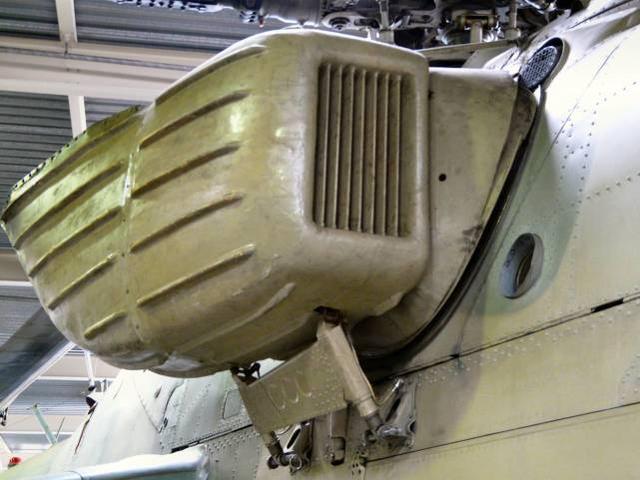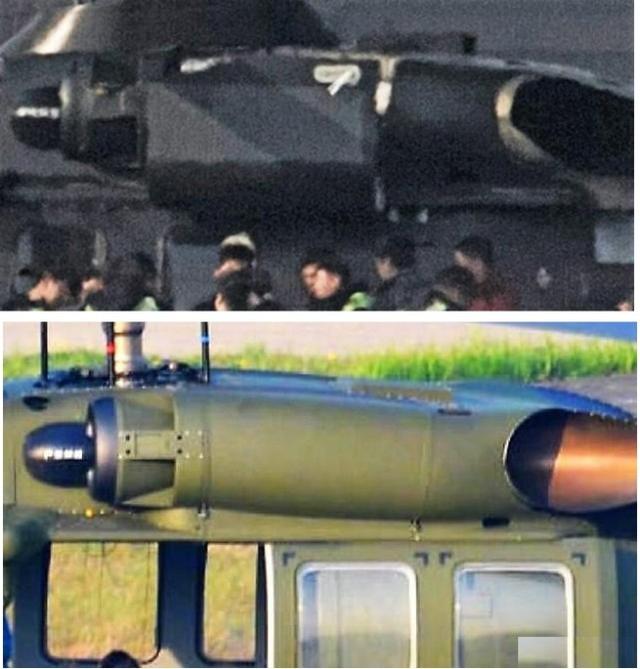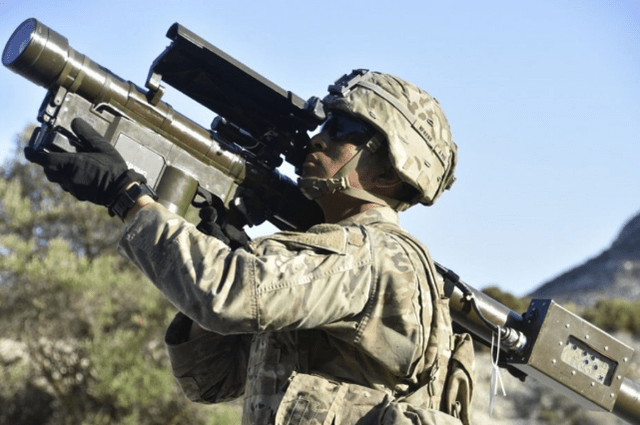On July 8, 2019, the U.S. government approved the sale of $2.2 billion worth of weapons systems to Taiwan, including M1A2 tanks and 250 “Thorn” man-portable anti-aircraft missiles. According to overseas media reports, these “Thorn” man-portable anti-aircraft missiles should be BlockI FIM-92F, which belongs to the technology of the United States in the late 1990s.
These “threin” missiles have attracted the attention of military fans. Many people are worried about the threat they pose to PLA helicopters and other low-altitude vehicles.
The author once saw an “expert” in a video program claiming that Taiwan can firmly grasp air supremacy as long as there are hundreds of thousands of “thor sting” missiles. Of course, this view is very ridiculous and not worth refuting.

Recently, there was another discussion on overseas social media. Some overseas netizens pointed out that the Russian-made rice-8 helicopters equipped by the People’s Liberation Army are not equipped with engine exhaust cooling devices, also known as infrared suppression devices, which are very easy to be shot down by infrared-guided man-portable anti-aircraft missiles such as “spurs”.
After Russia suffered losses on the Afghan battlefield, it was widely equipped with such devices for helicopters in the market and the 1980s. The discussion was very heated. Here we can talk about how many “stinger” missiles the Taiwanese army has? How much threat can it pose to the PLA?
In fact, the Taiwan authorities are already regular customers of “stingling” MANPADS. The U.S. Congressional Research Service released a survey on August 29, 2014, summarizing the main arms sales to Taiwan in the United States since 1990. In this report, we can find many sales cases of Stinger missiles.



Therefore, if the delivery of 250 Stinger missiles approved by the United States for sale last year is completed, Taiwan should receive a total of 2,187 Stinger missiles. However, for more than 20 years, Taiwan has consumed some “Thorn” missiles every year in its exercises, so the author estimates that Taiwan will have about 2,000 “Thorn” missiles in total.
So, as some netizens said, can Taiwan’s “Tox Stinger” missiles pose a major threat to PLA helicopters and other low-altitude flights? The author believes that the times have changed, and there are few opportunities for “stingling” to fight helicopters.
In the past few decades, the greatest achievements of man-portable anti-aircraft missiles have been in Afghanistan. It has been claimed that the CIA has shipped 500 Stinger missiles to the Afghan Resistance, shooting down at least 250 Soviet helicopters and other aircraft.
This number is not available, but combined with multiple data, from 1979 to 1989, the Soviet Union lost at least 333 helicopters and 118 other aircraft on the Afghan battlefield. At least a large part of it was shot down by the Stinger missile.
But we should also note that after the Soviet invasion of Afghanistan, there were many local wars in the world, and man-portable anti-aircraft missiles have never achieved such brilliant results. The results are scattered. Especially in the Syrian battlefield in recent years, the use of man-portable anti-aircraft missiles by Kurdish forces has not had many casualties on Turkish helicopters.
The author notes that in August 2020, one T-129 was shot down and another helicopter was injured; in October 2019, a Turkish Black Hawk helicopter was shot down; and in early 2018, one Turkish T-129 was shot down. There are also sporadic reports of individual helicopters shot down.
The author believes that there are the following reasons why the results of man-portable low-altitude missiles are not very small:
1. Modern helicopters generally use engine exhaust lipstick external suppression devices, coupled with infrared decoys and infrared alarm devices, which can effectively deal with most man-portable anti-aircraft missiles.
At present, China does not use infrared suppression devices in old helicopters, but it is likely that “wavelobe nozzle-induced infrared suppressors” have been installed in newly developed Wuzhi-10 and Zhizhi-20 helicopters.
In addition, on November 27, 2018, the Aviation News disclosed that an infrared suppressor independently developed by aviation industry helicopters successfully passed the appraisal and review. The media said, “The application of this achievement will effectively improve the response of domestic helicopters to threats from infrared-guided air-to-air missiles and improve helicopter flight safety.”

2. The maximum fire height of the Stinger man-portable anti-aircraft missile is about 3,800 meters and the maximum range is about 4,800 meters. However, in actual combat, the effective firing height of Stinger and other man-portable anti-aircraft missiles is usually about 3,000 meters.
As long as the aircraft is above three or four kilometers high, the “poison sting” will not be hit.
3. From the recent Naka conflict between Armenia and Azerbaijan, it can be seen that drones will play a major role in future wars. Medium and large drones can usually fly above three to four kilometers, not threatened by man-portable anti-aircraft missiles, and can easily “name” ground targets with airborne weapons.
Small suicide drones, also known as wandering ammunition, have small infrared radiation and small targets, which are difficult to detect. Even if found, it is not easy to fight. It doesn’t matter if they are shot down. The cost is very low, and it may be cheaper than the price of the “Toad Stinger” missile.
Therefore, as many overseas netizens said, the process of liberating Taiwan is first of all to wash the ground in the east wind. How many “thorny” missiles can be left after washing? The drone industry in mainland China is very strong. In the future, the liberation of Taiwan may also stage a large number of drones hovering around the clock.
Where is there a place where the “stinger” missiles work? The author believes that there may be individual successful cases of surprise attacks, but on the whole, Taiwan’s “threck” anti-aircraft missiles will not cause much trouble to the PLA.



